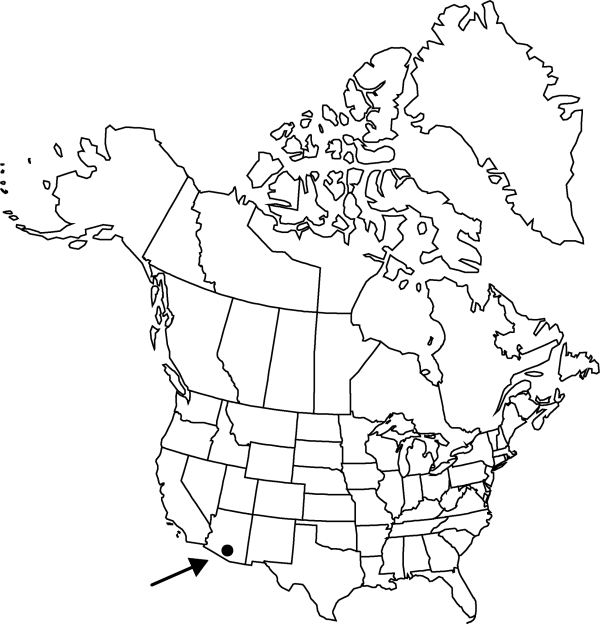Pisonia capitata
Contr. U.S. Natl. Herb. 13: 388. 1911.
Shrubs or small trees, to 6 m; branches dense, spreading at right angles, usually armed with stout, recurved spines 7–14 mm. Stems arching, velvety when young, glabrate later. Leaf blades broadly obovate or suborbiculate, 2–6 × 2–6 cm, base rounded or broadly cuneate, apex rounded, rarely subacute. Inflorescences: [staminate inflorescences subglobose, dense, 1–2 cm diam.]; pistillate inflorescences densely subglobose at anthesis, more open in age; branches divaricate or ascending; fruiting pedicel 0.5–2 cm. Perianths: [perianth of staminate flowers deep red, broadly campanulate, 2–3 mm, densely and shortly viscid-villous]; perianth of pistillate flowers greenish, often blushed with red, 2–2.5 mm, densely puberulent. Fruits clavate, 7–10 × 3–4 mm, densely puberulent between glandular ribs, glands extending entire length of fruits.
Phenology: Flowering winter–early spring.
Habitat: Protected clefts on rhyolitic soils in arid scrub [tropical deciduous forests, thickets, along watercourses]
Elevation: 0-1100 m
Distribution

Ariz., nw Mexico.
Discussion
Pisonia capitata is represented in the flora by a single, possibly clonal, population of a few pistillate plants in south-central Arizona several hundred kilometers north of known populations in Sonora, perhaps originating from a freak event of bird dispersal. Plants are not known to have set seed.
As noted above, pistillate plants of Pisonia capitata and P. aculeata exhibit no apparent differences, nor are there apparent vegetative differences between the species. That plants known in the flora truly represent P. aculeata is an assumption based on geography.
Selected References
None.